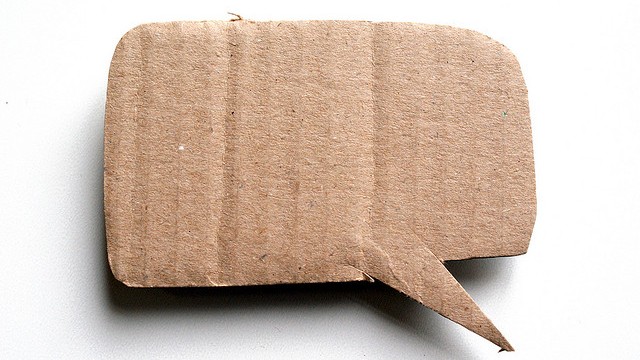
Maybe you’re an ummer. Or maybe you’re an uhher. Perhaps you favor another word altogether. Or are you ambi-blunderous?
Whichever your poison, the slips and stumbles that slop up speech have always intrigued us. But these days, some researchers have stopped asking why we produce so many ums and uhs—often called disfluencies—and have started asking: Do they serve any purpose?
In 2002, researchers Herb Clark and Jean Fox Tree proposed that they do. Um and uh are simply words, the pair reasoned, planned for and produced like any others. But instead of referring to something in the world, um, uh, and their brethren have a very special discourse function: speakers use them to “announce that they are initiating what they expect to be a minor or major delay before speaking.”
Some words are more difficult to retrieve from memory than others: rare words, or words that just haven’t come up in a while, or just about any words if we’re under stress. So we use um and uh to signal to our listener that even though we’re still not quite ready to proceed, we’re working on it. Just, uh, umm … give us a sec.
A few years later, another research team led by Jennifer Arnold found some of the earliest evidence that such signals do not go unnoticed by listeners. Study participants were shown a display containing multiple pictures and told to follow a set of spoken instructions. As they listened, researchers recorded where on the display their eyes were looking. When the instructions included a disfluency (as in, Now put thee, uh …), people were likelier to turn their gaze to an object that had not yet been mentioned, and thus should be more difficult to produce, than when the instructions were fluid. In other words, the use of um or uh signaled to the listener that the speaker was struggling to retrieve a word—information then used to infer which word they were likely struggling with. A subsequent study finds that disfluencies trigger similar expectations of tough-to-name words in children as young as two or three years old.
But here the relationship between disfluencies and word difficulty gets a bit weird. Tell someone that they are listening to speech from someone with object agnosia, who is unable to recognize even everyday objects, and all of a sudden um and uh seem to lose their predictive powers. And a study out this month finds similar results for nonnative speech: Now put thee, uh … no longer directs our attention to the trickier-to-name object when it is spoken by an inexperienced foreign speaker.
In some ways, the latter finding is especially surprising. The factors that make word retrieval tough for us are generally magnified for less fluent speakers. If anything, then, we might find it useful to attend more carefully to a nonnative speaker’s disfluencies. But we don’t. When we can attribute all the umming and uhhing to a speaker’s more general difficulties with word retrieval, it seems, we no longer bother to attribute it to anything else.

